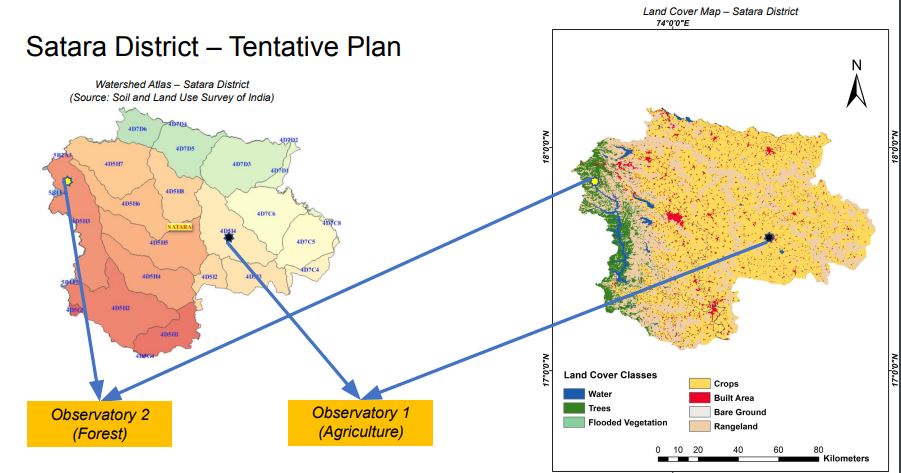Satara Living Lab is envisaged as an experimental testbed for understanding the Earth system processes with a focus on natural- human interactions and to achieve sustainability in food-water- energy nexus in the region.
Importance of Experimental Watershed and Critical Zone Observatory
The Living Lab serves as outdoor hydrologic laboratory to understand help understand the basic Hydrology of Satara
district in Maharashtra and enables using field data in process-based modelling. The main research activities include:
1. Climate change
2. Land use management
3. Water, energy, and carbon balance
4. Critical zone hydrology and ecology
5. Agriculture


Key Objectives
- Achieve sustainable “Measurement – Monitoring – Management” in the region.
- Understanding the complex interactions between water, energy and carbon cycles.
- Development of efficient irrigation water management system to improve crop productivity.
- Assessment of hazard and vulnerability map for different crops.
- Designing socio-economic interventions such as crop switching to improve nutrition production and farmers’ profit.
Activities of Satara Living Lab
- Stakeholder Interactions : Students and faculty from IIT Bombay also interacted with farmers from the district to understand the crop choices of farmers
- Setting up Automatic Weather Station – monitors precipitation, wind speed, wind direction, humidity, air temperature, dew point temperature, solar radiation, leaf wetness soil moisture and soil temperature (Funded through CSR support from Oracle)
- Setting up soil moisture network (in collaboration with TIH IIT Bombay; funded through CSR support from Oracle)
Future Activities
- Setting up flux tower
- Expansion of AWS network
- Expansion of soil moisture network
- Synergistic use of satellite remote sensing and drone technology for effective measurement data for agriculture water management and climate research

